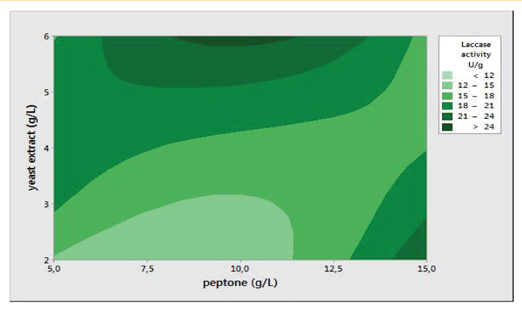Effect of solid state fermentation medium optimization on Pleurotus ostreatus laccase production
DOI:
https://doi.org/10.17344/acsi.2015.1764Keywords:
Taguchi method (DOE), Orthogonal array (OA), Optimization, Pleurotus ostreatus, Laccase production, Solid state fermentationAbstract
The objective of this work was to increase laccase production by Pleurotus ostreatus PLAB through culture medium optimization using solid state culture conditions. Increased laccase activity was obtained through design of experiments (DOE) using the Taguchi orthogonal array (OA). Seven factors, viz. lignocellulose, glucose, yeast extract, peptone, KH2PO4, MgSO4 7H2O and MnSO4 H2O at three levels and pH at two levels. OA layout of L18 (21 x 37) was selected for the proposed experimental design using Minitab 17 software. Data analysis showed that lignocellulose (20 %) and glucose (10 g L1) had positive effect, whereas KH2PO4, MgSO4∙7H2O and MnSO4∙H2O did not have significant effect on laccase production. Taguchi OA analysis showed that pH 6, lignocellulose 20 %, glucose 10 g L-1, yeast extract 6 g L-1, peptone 15 g L-1, KH2PO4 3 g L1, MgSO4∙7H2O 0.5 g L-1 and MnSO4∙H2O 0.1 g L-1 were the optimal conditions to maximize laccase production. The model predicted a 30.37 U g-1 dry wt., which agreed with the experimentally obtained laccase activity 29.15 U g-1 dry wt. at optimal conditions.
Downloads
Additional Files
Published
13.12.2015
Issue
Section
Chemical, biochemical and environmental engineering
License
Except where otherwise noted, articles in this journal are published under the Creative Commons Attribution 4.0 International License
